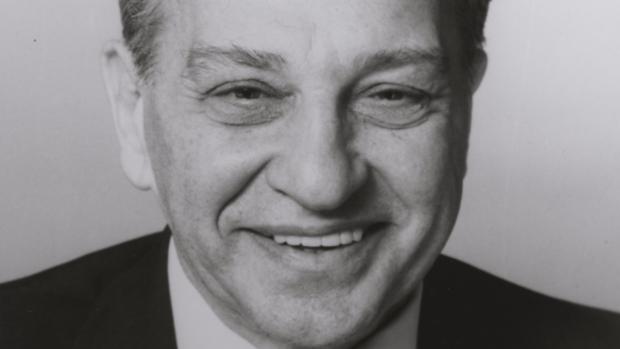Honoring Rudolph Marcus, a Nobel-Winning Professor
In Celebration of National Chemistry Week

When Rudolph Marcus was called upon to pen an autobiographical statement after winning the 1992 Nobel Prize in Chemistry, he described a fortuitous encounter at a 1951 American Chemical Society meeting with Dean Raymond Kirk of what was then known as the Polytechnic Institute of Brooklyn. Shortly thereafter, as he wrote, “I was hired, and my life as a fully independent researcher began.”
Marcus was especially happy to find the position in Brooklyn because he had already sent out almost three-dozen queries, to no avail. (He once quipped that he had sent out 35 letters and was not rejected 35 times only because some had not even bothered to reply.)
He found his new job exhilarating. “It's interesting that Polytechnic at that time was not a well-known school,” he recalled to an interviewer for the Nobel Foundation. “It had very little endowment but what it did have was young people who were extremely active. It was a polymer center, and Herman Mark [known as the Father of Polymer Science] actually was there. ... There were several other people who had come over from Europe who were well-known, and it was extremely strong in electrical engineering and microwaves.” He continued, “It turned out that this chemistry department was full of a bunch of eager beavers, so the atmosphere was very exciting.”
Once here, Marcus began experimenting with both gas phase and solution reaction rates, wrote a series of well-regarded papers, and pondered his next areas of research.
He credits a student in his statistical mechanics class with setting him on the path that would ultimately garner him the Nobel. He told the interviewer: “[The prize] arose because of a question that a student asked me in one of my classes at Poly. ... He wondered whether something we were talking about at the time might apply to one of the problems in polymer chemistry that he was studying [in another course].” After determining that there was applicability, Marcus began reading further about polymers and electrostatic properties. “In the process of doing that, I learned a lot about electrostatics so that a few years later when this problem in electron transfer arose, I heard about it, then I saw how I could apply electrostatics in a much more extended form,” he explained. “If that student had not asked me that question, however, I might not have known enough about electrostatics to know how to tackle the problem.”
Marcus’s theory on electron transfer among molecules in a solution took into account changes in the structure of the reacting molecules and the solvent's molecules, and added greatly to the world’s understanding of fundamental chemical processes like photosynthesis and corrosion.
And it all started right here with a thoughtful question from a bright student.




